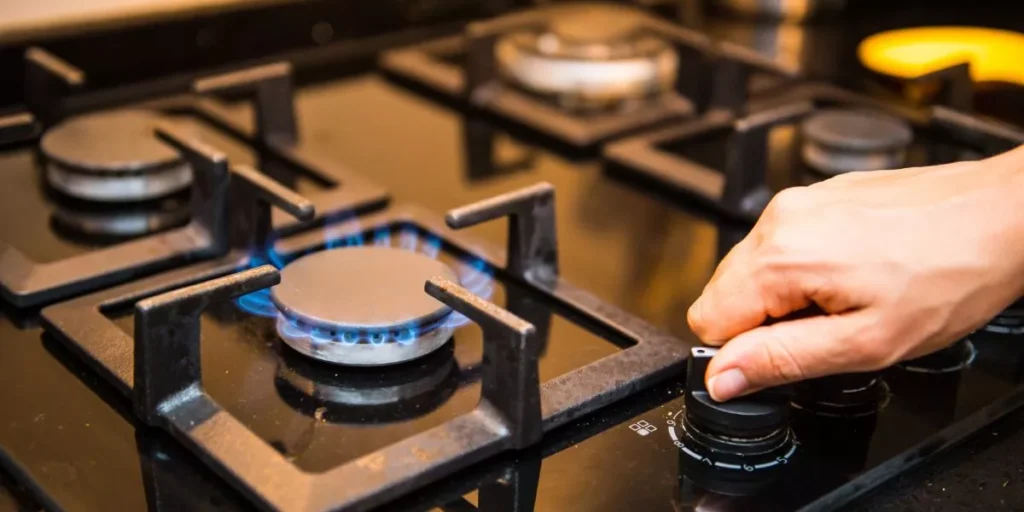
When using a gas stove, you must navigate a fine line between convenience and caution. Properly handling this kitchen appliance involves a delicate balance of awareness and responsibility. By following a set of essential guidelines, you can ensure not only your safety but also the stove’s longevity and efficiency. So, how can you make the most of your gas stove without compromising on safety or functionality? Let’s explore the crucial do’s and don’ts that every gas stove user should keep in mind.
Proper Installation
When installing a gas stove, ensure it’s done by a certified professional to guarantee safety and functionality. This step is crucial in preventing potential hazards and ensuring that your gas stove operates efficiently. Certified professionals have the necessary training and expertise to correctly set up the gas connection, secure the appliance in place, and conduct thorough safety checks. By entrusting the installation to a professional, you can have peace of mind knowing that all safety protocols and regulations are followed.
Professional installation not only ensures your safety but also helps in the proper functioning of the gas stove. Improper installation can lead to gas leaks, which pose a serious risk to your home and health. Additionally, a gas stove that isn’t installed correctly may not work efficiently, leading to issues such as uneven cooking or problems with ignition. Investing in a certified professional for installation is a wise decision that prioritizes both safety and functionality for your gas stove.
Safe Operation
To operate a gas stove safely, always familiarize yourself with the appliance’s controls and safety features. Before using the stove, ensure all burners are off and there are no gas leaks.
When turning on the burners, make sure the area is well-ventilated to prevent the buildup of gas. To ignite the burners, use a long-handled lighter or the stove’s built-in ignition system, if available. Avoid using matches as they can be dangerous.
While cooking, never leave the stove unattended, especially when there are pots or pans on the burners. In case of a gas smell, turn off the stove immediately, open windows, and ventilate the area. Remember to keep flammable items away from the stove to prevent accidents.
Additionally, always double-check that the burners are fully turned off after use to avoid any potential hazards. By following these safety precautions, you can ensure the safe operation of your gas stove.
Maintenance Tips
Regularly cleaning your gas stove is essential to maintain its efficiency and prolong its lifespan. Make sure to clean the burners, grates, and control knobs frequently to prevent grease and food buildup, which can lead to uneven cooking and potential safety hazards. Use a mild detergent and warm water to clean these components, ensuring they’re completely dry before reassembling them.
Additionally, inspect the gas lines and connections for any signs of wear or leaks regularly. If you notice any issues, such as hissing sounds or the smell of gas, turn off the supply immediately and contact a professional for assistance.
To keep your gas stove in top condition, avoid using abrasive cleaners or scouring pads that can damage the surface. Instead, opt for gentle cleaning methods to preserve the stove’s finish. Lastly, remember to schedule professional maintenance at least once a year to ensure all components are functioning correctly and safely.
Common Mistakes to Avoid
Making mistakes while using a gas stove can result in safety hazards and decreased efficiency, so it’s crucial to be aware of common errors to avoid.
One common mistake is neglecting to check for gas leaks regularly. Even small leaks can lead to potential fire hazards or health risks.
Another error to steer clear of is using the wrong cookware size. Using pots or pans that are too small or too large for the burner can cause uneven cooking and waste energy.
Additionally, forgetting to turn off the gas valve after use is a dangerous oversight that can lead to gas leaks. It’s important to double-check that the valve is off to prevent any potential accidents.
Ignoring proper ventilation is also a common mistake. Adequate airflow is necessary to prevent a buildup of carbon monoxide and ensure safe cooking conditions.
Kitchen Appliances














